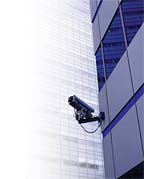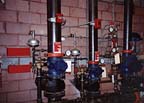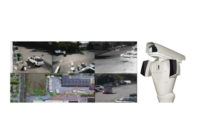
Sharing of information and data across disparate systems, however, can be an extremely complex and costly undertaking. Furthermore, there are numerous methods of integrating fire alarm and security functions in buildings or across enterprises. Systems integrators and manufacturers will promise, and many will deliver, completely integrated fire alarm and security systems. However, sales hype, slick marketing brochures and trade show booths all proclaiming to answer facility security and fire alarm monitoring needs can overwhelm building owners and facility managers.
So, where to start?

From the top
To ensure a successful fire alarm and security system integration project, such as one a local authority will approve, it is essential that the project manager have expertise in security management, security system functions and limitations, fire system functions, limitation, and local and national fire and building codes. Here is where it is crucial to have a thorough understanding of UL listings, NFPA, building codes and industry best practices.The project manager should first determine to what extent integration is actually needed and feasible. This should be accomplished by a thorough risk/needs assessment (also known as a vulnerability assessment or risk analysis) with an assessment of the risks and threats facing the company, building or facility as well as existing features for mitigating them.
Following the operational information gathering step, a complete assessment of the building systems and/or enterprise functions must be completed in order to determine existing conditions. This could involve access control, video surveillance, fire alarm, intrusion detection, HVAC, human resources, accounting or any number of systems and sub-systems throughout the facility.
Once this assessment has been completed, there is a report detailing the company’s choices, the costs associated with those choices, initial recommendations for alternatives and a preliminary project schedule. If appropriate, the report should include lifecycle costs for each major component of the system, cost savings associated with deployment of the integrated system, suggestions and costs for the replacement of systems and components that can not be integrated
Making the team
Next, the end user must assemble a project team and determine integration features. At this point, the project team should be prepared to research technologies, manufacturers, suppliers and installers.
One key element to the success or failure of a project is the quality of the contract documents (specifications and drawings). After all, the contract documents are the only place where the owner can stipulate in detail the desired system functionality, any specific requirements, and expectations for safety, project management, site conditions schedule and project execution. Poor quality contract documents often result in disaster.
The best bidder
Obtain competitive bids. Here are some questions to ask:
- Can the contractor staff the project with technically competent people?
- Does the contractor have the financial resources to complete the project according to the schedule?
- Has the contractor successfully completed projects similar in size and scope, utilizing the same features and technology required for your project?
Once the contractor is selected and construction begins, close construction administration is necessary to ensure systems and equipment are installed as planned. A weekly meeting with all project participants can review progress against the schedule, resolve conflicts and address any changes. The project manager should lead this effort with weekly inspections and, through continuous dialogue with contractors, the management staff and others on the project team.
The project manager also should regularly inspect the installation of equipment, materials and systems to catch problems early enough in order to resolve them before they affect the schedule, budget or functionality of completed systems. Items such as fire stopping, conduit and cable supports, device locations and installation, patching, and painting are as important to the overall success as is the operability of the systems being integrated. Changes from construction drawings must be documented regularly in order to ease compiling system "as-builts" for turnover.
At some point in every project, companies must test systems, devices and functionality of the integrated features. This is where the quality of the contract documents and the experience of the project manager become evident. The project manager should prepare a complete testing schedule, along with testing procedures and checklists for every system, sub-system and functional feature of the integrated system. Equipment and system suppliers, contractors and installers should be contractually required to perform the tests and correct all deficiencies discovered.
As the process ends
Once all systems and their interrelational functionality have been established, the contractor should finalize system as-built documentation and operating manuals. This requirement should be clearly called out in the contract documents. System suppliers should be responsible for delivering complete programming and operating manuals to the owner at the end of the project.
It's good to remember that, as with any project, security and fire integration should start with that key project manager. Unless there is true and deep expertise inhouse in such areas as fire alarm, security and coding requirements, specifications, design and project management, the project manager should be an independent consultant, engineer or systems integrator. This will help ensure an unbiased assessment and a more successful completion of the tech upgrade or new installation.


